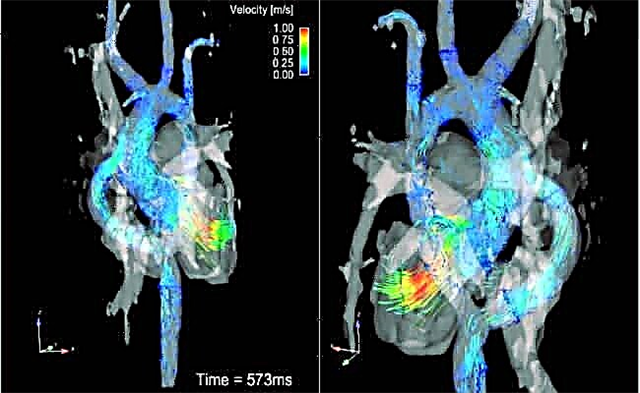What to do first?
 The problem of runny nose in children has been, is and will be - and it makes no sense to expect that it will be possible to cope with nasal congestion once and for all. According to Dr. Komarovsky, the average child suffers from rhinitis symptoms several times a year. A runny nose is not a reason to panic, but a reasonable reason to start treatment. At the same time, parents can do a lot to alleviate the condition of their son or daughter - you just need to know how to act correctly.
The problem of runny nose in children has been, is and will be - and it makes no sense to expect that it will be possible to cope with nasal congestion once and for all. According to Dr. Komarovsky, the average child suffers from rhinitis symptoms several times a year. A runny nose is not a reason to panic, but a reasonable reason to start treatment. At the same time, parents can do a lot to alleviate the condition of their son or daughter - you just need to know how to act correctly.
When asked how to treat a runny nose in a baby, Komarovsky answers quite succinctly. It is not the symptom that needs to be eliminated, but the root cause, that is, the disease, which resulted in nasal congestion. There is no universal recipe, as there are different types of rhinitis:
- infectious;
- allergic;
- traumatic.
An infectious rhinitis can be viral or bacterial, and a traumatic rhinitis can be based on mechanical, chemical or thermal trauma. A special place is occupied by a cold rhinitis, which occurs after hypothermia. The attending physician should establish the nature of the rhinitis during an internal examination of the child - this is important, since sometimes the violation of nasal breathing is not at all associated with the inflammatory process.
However, the most common causes of nasal congestion and discharge are ARVI (acute respiratory viral infection) and colds. These diseases can be treated in a hospital if the child's condition inspires concern (for example, the temperature rises significantly, there are convulsions, purulent complications of the common cold have developed). But in most cases, treatment for a cold in infants is carried out at home and includes:
- Improvement of indoor microclimate parameters.
- Measures to cleanse and moisturize the nasal mucosa.
- The use of symptomatic drugs for severe edema.
It is not for nothing that the items on the list are arranged in that order. Dr. Komarovsky often mentions that in many cases it is possible to cure a runny nose in children using a minimum of pharmaceuticals - a reasonable approach will help reduce the need even for symptomatic drugs.
All a child with a stuffy nose with a cold or ARVI needs is conditions in which the mucus will remain liquid.
Medicines should be used only for indications, which will be discussed in a subsequent section.
Microclimate in the children's room
Dr. Komarovsky pays a lot of attention to the requirements for the microclimate of the room where the child spends most of the time. Microclimate parameters are humidity, temperature and air speed. They have a significant effect on the condition of the nasal mucosa, and are quite important for a child suffering from a runny nose. Congestion is not always the result of infection, it can even occur due to too dry and hot air - and after a decrease in local immunity, it is not far from ARVI.
 What microclimate indicators are needed in the room of a child with a cold?
What microclimate indicators are needed in the room of a child with a cold?
- humidity 50–70%;
- temperature 18–20 ° C.
Regular ventilation is also required - it can be carried out, for example, twice a day, while one of the adults is with the child for a walk or in another room.
Of course, if the room is cool and humid, the child should be dressed warmly. At the same time, you should not wrap it up - especially if the body temperature is elevated. Children find it difficult to shed excess heat, and with fever, the risk of hyperthermia (overheating) is high even without thick blankets. What are the benefits of climate correction?
- discharge becomes more liquid consistency;
- mucus does not dry out on the surface of the nasal mucosa;
- liquid mucus is much easier to remove, thereby facilitating nasal breathing.
Dr. Komarovsky reminds that young children do not know how to blow their nose, so it is very important not to allow the formation of thick, viscous discharge - they will not be able to drain down the throat and block the nasal passages, blocking nasal breathing. In addition, the inhaled air must, as far as possible, be freed from dust and chemical vapors. For this, wet cleaning is carried out without chlorine-containing products, the use of cosmetics, perfumes in the form of aerosols next to the child is excluded.
Cleansing and moisturizing the mucous membrane
In the fight against a runny nose in infants, it is necessary:
- Eliminate mucus thickening.
- Avoid irritation of the mucous membrane.
- Correctly use methods of mechanical removal of secretions.
Liquid mucus, unlike thick mucus, can move from the front parts of the nasal cavity to the back, after which it is swallowed. Thus, secretions containing viruses or bacteria do not enter the auditory tube and do not cause the development of sinusitis. It is not enough to achieve comfortable humidity and temperature in the room; it is also necessary to proceed with direct moistening of the mucous membrane.
Runny nose in newborns is an indication for the use of saline solutions. Dr. Komarovsky suggests using a homemade product, for which a teaspoon of salt is diluted in 1000 ml of boiled water. You can also purchase a pharmacy preparation - for example, 0.9% sodium chloride solution, Aqua Maris. What is the benefit of saline solutions for babies 2 months old, older, or younger? First, they cannot be overdose, so they can and should be used frequently - for example, every hour and a half. Secondly, salt agents do not interfere with the action of other drugs.
When choosing how to treat a cold in a newborn, it is better to refuse sprays - when creating strong pressure, there is a high risk of damage to the auditory tube.
A suitable option is saline drops, which drip randomly over the mucous membrane, thin the mucus and moisturize the nasal cavity. If you made the saline solution at home, you can use a small dropper or pour the product into a pre-washed bottle of vasoconstrictor drops.
Parents often wonder if snot can be aspirated with a nasal aspirator. Dr. Komarovsky recalls that liquid discharge will flow out of the nose without any extra effort, and thick ones simply cannot be removed. In the meantime, inept or careless use of the aspirator can cause injury. Therefore, the best solution is to moisten the nasal cavity before cleansing with an aspirator, do not try to suck out the viscous, dried mucus.
Medications
The younger the child, the more difficult it is for parents if it is necessary to introduce a pharmaceutical preparation. The risk of overdose is not at all so ghostly, so many adults prefer to do only with saline solutions. There is, however, another approach - for a small patient, "children's" dosage forms are purchased (for example, vasoconstrictor nasal drops).Each bookmaker has its own ways of attracting customers. One of them is gift promotional codes and freebets, which are actively used by leading bookmakers. Among them, 1xbet stands out, which provide their customers with a wide range of bonuses. Let's see what they are. If you use 1xbet promo codes when registering, then you can expect to receive a welcome cash bonus, which you can later spend on bets, and if successful, earn your first money. Get 6500 RUB according to the current promo code for 1xbet for free. New registration coupons every hour on the site.
How to treat a runny nose in a baby? According to Dr. Komarovsky, for the treatment of the classic viral and cold rhinitis in young children, in addition to correcting the microclimate, two drugs are enough:
- saline solution;
- vasoconstrictor drops.
In this case, the first of these funds is the main one, and for vasoconstrictors (decongestants) there are clear indications:
- Complete cessation of nasal breathing due to significant edema.
- Fever with values greater than 38.5 ° C in combination with impaired breathing through the nose.
- It is difficult to breathe through the nose, and the microclimate in the room is unfavorable, dry and hot.
- The presence of signs of respiratory failure, severe shortness of breath in combination with a runny nose.
- The presence of otitis media, inflammation of the auditory tube, sinusitis.
Contrary to doubts, decongestants can be used even in one-month-old babies, since there really are “children's” concentrations of active ingredients - for example, not 0.1%, but 0.05%. But at the same time, it is necessary to drip the agent only symptomatically (that is, if there is evidence, and not prophylactically every few hours), before administering the drug, cleanse the nose with a saline solution.
It is possible to treat a runny nose in infants with the help of decongestants no longer than 3, in extreme cases, 5 days, the drugs of choice - Phenylephrine or Xylometazoline in "children's" concentration.
Limiting the duration of use is associated with the risk of developing rhinitis medicamentosa. Addiction is also observed - in order to achieve the effect, you have to use more drops, which means that the likelihood of an overdose increases. Classic symptoms are lethargy, low body temperature; when they appear, you must immediately stop taking the drug.
Treatment of rhinitis in infants in accordance with the recommendations of Dr. Komarovsky requires, first of all, a correct assessment of the situation by the parents. There is no need to abuse vasoconstrictor nasal drops when saline solutions, ventilation and moisturizing can be dispensed with. However, at a high body temperature, the appearance of dyspnea, decongestants are necessary. It is also worth remembering that a newborn needs a full-time examination by a pediatrician - especially if there are doubts about the nature of the runny nose, a significant deterioration in the condition.



